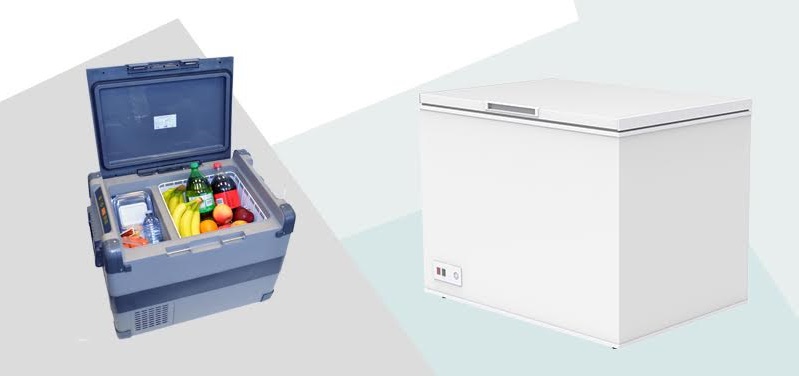
The magic of a 12 volt freezer is that they operate on the joyous tears of the sun. Well, if you insist on a more elegant response, I can humour that as well. A 12 volt freezer is not all that different from any other 12 volt appliance. They run on DC energy as opposed to standard AC energy we get in our households. You’ll find that they’re usually used when utility power is hard to come by, when there are mobility issues (portable units!), or in remote areas.
Systematically, there are about 4 types of freezers that can be made into 12 volts. There are absorption variants, which you’ll most likely find in RVs. The costs are fairly similar to a comparable compressor driven unit. They tend to be more finicky and require a little more attention. Over time, with wear and tear, they are prone to damage and ammonia leaks. They are also not as efficient and often come with an AC option because it’s borne of necessity.
There are also thermal electric units. You usually find a thermal electric 12 volt freezer in smaller portable sizes. They are generally meant to be taken on the road and plugged into your cigarette lighter. These units don’t have compressors and are inefficient and ineffective. Their main drawing point is price. When the ambient temperatures are too high, most consumer grade thermal electric freezers will struggle to keep anything cool, let alone cold.
Then there are compressor driven portable 12 volt freezers. These units are nice, because they are often outfitted with a DC compressor for operation. This helps with efficiency and keeping the entire 12 volt freezer at a stable temperature. The downside is that they have to maintain a pitch of no more than a 30° elevation. The gas in the compressor needs at least that much for proper operation, for the most part. DC compressors are also not cheap, so it drives the price of the units up. Unfortunately, there is no middle ground between these and the thermal electric units.
Last, but not least, is a standard DC compressor driven full-size 12 volt freezer. So long as it has a true DC compressor and not an inverted AC compressor (use price as your rule of thumb here). They operate almost exactly the same as your regular household variant; with the exception that they operate on 12 volt DC power. Like most freezers, they could be left to run autonomously without much concern or care. Just a manual defrost once in a while would be more than enough in terms of maintenance. The cost is also are a little high, but they are more efficient and stable in terms of flawless operation.

I have a question whats with the hole on the door on the freezer found in all side by side fridges
Are you talking about the side vent? Generally speaking we have side vents to help circulate air to the compressor, improving air flow and circulation in order to increase the longevity of the appliance.
Otherwise, the only holes on the appliance doors are part of the hinges to open the doors. Our upright refrigerators have two sets of holes on our doors to allow our users to switch the hinge to the left or right. However, the side that isn’t used it capped off.